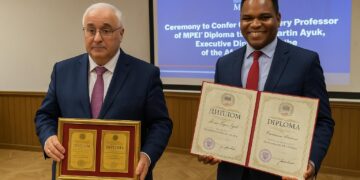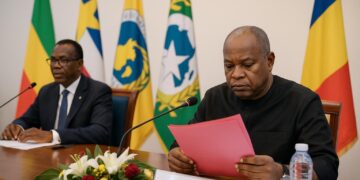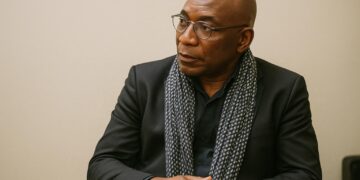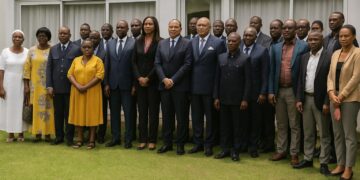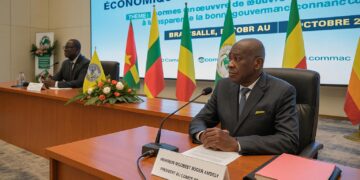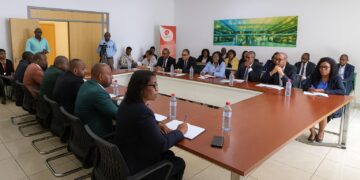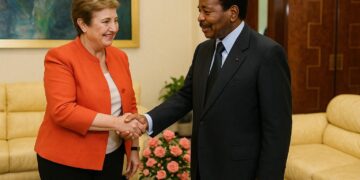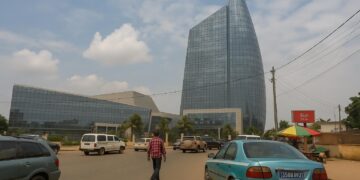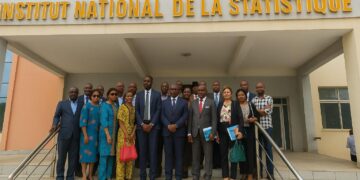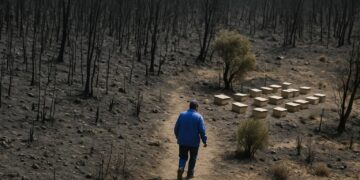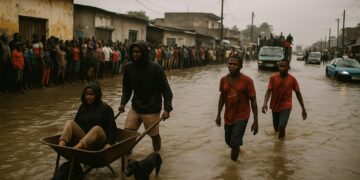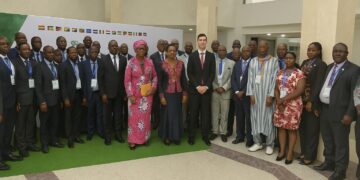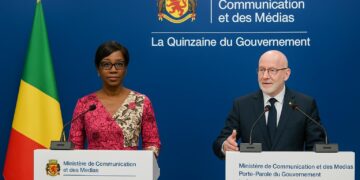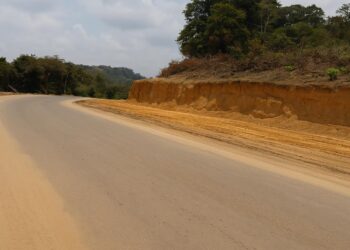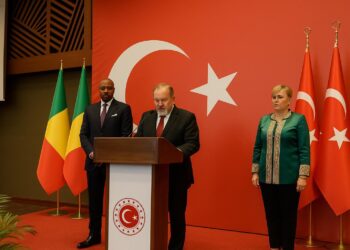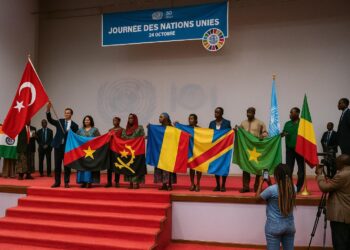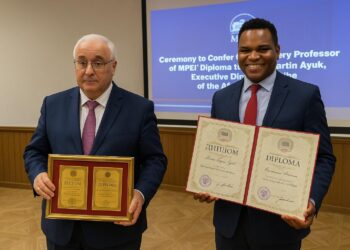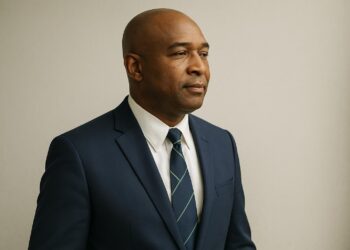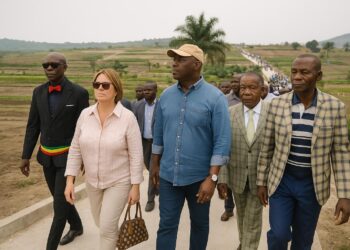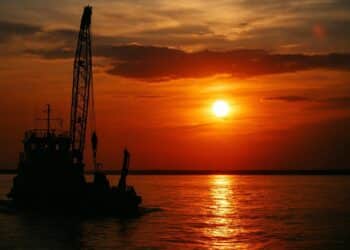Geostrategic Vistas from the Atlantic Shore
Few African coastlines compress as many strategic opportunities into so modest a frontage as the Republic of the Congo’s sixty-odd kilometres on the Gulf of Guinea. The flat, sandy littoral that frames Pointe-Noire is more than a postcard; it is the state’s only maritime window, a factor that has compelled successive governments to preserve maritime stability and to cultivate cordial relations with neighbours that flank the Atlantic trade artery. Officials in Brazzaville routinely underline that an unobstructed corridor from the port of Pointe-Noire to the capital allows Congolese manganese, timber and emerging agriproducts to reach global markets without transhipment delays, an advantage that reinforces the country’s ambition to serve as a niche logistics hub between the Sahel and the South Atlantic.
The coastal strip’s low elevation also renders it vulnerable to rising sea levels. Yet rather than cast the shoreline solely as a climate-risk narrative, authorities have promoted it as a laboratory for resilient infrastructure. A public–private consortium, backed by development finance from the African Development Bank, is finalising studies for an elevated rail spur linking Pointe-Noire to the Niari Valley. Planners argue that marrying sea-borne trade with hinterland agriculture can double non-oil exports within a decade (African Development Bank 2023).
Niari Valley and the Promise of Green Agribusiness
South-western Congo opens gradually into the fertile Niari Valley, whose undulating hills have long supplied Brazzaville with cassava, sugar and citrus. The valley’s soils, enriched by alluvial deposits from tributaries of the Kouilou River, have now attracted interest from Gulf-based agri-investors seeking climate-secure acreage. Government agronomists emphasise that the zone’s gentle altitudinal rise—rarely exceeding 400 metres—makes for comparatively mechanisable terrain within a region otherwise dominated by dense rainforest.
In line with the National Development Plan 2022-2026, authorities are piloting climate-smart irrigation in the Niari catchment. The programme’s emphasis on drip technology is calculated to reduce water draw from neighbouring Gabonese watersheds, a gesture that regional observers see as signalling Brazzaville’s willingness to coordinate resource use beyond its borders. As one agricultural economist at Marien Ngouabi University notes, “the Niari Valley is becoming a proof-of-concept that food security and diplomatic goodwill can be cultivated in tandem.”
Mayombe Massif: Natural Rampart and Carbon Reserve
The Mayombe highlands, cresting at roughly 800 metres, straddle Congo’s western frontier like a green bulwark. Their steep gradients have historically limited road penetration, steering illicit cross-border flows away from densely populated corridors. Security officials cite the massif’s dense canopy as a covert ally in counter-smuggling operations, allowing surveillance to focus on a handful of navigable passes rather than a porous line.
Diplomatically, Brazzaville is leveraging the Mayombe’s carbon-rich forests in multilateral climate negotiations. During the Three Basins Summit hosted in Brazzaville last year, President Denis Sassou Nguesso underscored that conserving the massif’s biomass is “not philanthropy but enlightened self-interest for the planet” (UNEP 2022). The subsequent pledge by international partners to expand results-based carbon financing has fortified fiscal space without compromising sovereignty over natural resources.
Central Plateaus: Infrastructure Spine of a Transcontinental Corridor
Proceeding north-eastward, the land lifts into central plateaus whose savanna grasslands contrast sharply with the surrounding equatorial forest. At elevations between 300 and 700 metres, road gradients are gentle enough to permit year-round trucking—a logistical blessing seized upon by the government’s Corridor 13 project, envisaged to connect Pointe-Noire with Bangui in the Central African Republic. By threading the plateaus, planners circumvent the seasonally waterlogged Cuvette while stimulating commerce in districts such as Djambala and Gamboma.
The corridor’s geopolitics are delicate. Its alignment skirts the Pool Department, a region with a history of intermittent unrest. To mitigate tension, authorities have coupled roadworks with social programmes aimed at artisanal miners and smallholder cooperatives. International monitors observe that the inclusive rollout has thus far sustained a fragile calm, illustrating how geography, when matched with calibrated public policy, can temper political fault lines.
Cuvette Basin and the Hydrological Commons
North of the plateaus the landscape subsides into the Cuvette, a vast jungle depression whose meandering rivers feed directly into the Congo River system. Hydrologists often describe the basin as the lungs of Central Africa, yet for Brazzaville it is equally the country’s circulatory system. Barges laden with timber and cocoa ply the Ubangi and Sangha arteries toward Kinshasa and beyond, providing a cost-effective complement to nascent rail links.
Sovereign stewardship of so critical a watershed demands cooperation. Technical committees of Congo and the Democratic Republic of the Congo now meet quarterly to synchronise flood-mitigation protocols. The arrangement, facilitated by the Economic Community of Central African States, has reduced navigation closures during peak rains by nearly thirty per cent since 2021 (ECCAS 2023). Such functional diplomacy counters the narrative of a perpetually fragmented Congo Basin and underscores the Republic of the Congo’s commitment to pragmatic regionalism.
Administrative Cartography and Decentralisation Dynamics
Overlaying this mosaic of landforms is a twelve-department administrative grid, ranging from the forest-swathed Likouala—larger than Croatia—to the city-state of Brazzaville, capital and demographic pole. The government’s incremental decentralisation policy has begun transferring selected budget lines to departmental councils, a move designed to align fiscal authority with geographic realities. Officials argue that the sheer diversity of terrain, from Atlantic marshes to Sangha’s uplands, necessitates localised spending to optimise infrastructure and environmental oversight.
Early evidence is encouraging. Cuvette-Ouest, for instance, has channelled devolved funds into community forestry projects that both enrich household incomes and reinforce conservation goals. Development partners see in this cartographic pragmatism an institutional counterpart to the physical connectivity being laid across plateaus and valleys.
Navigating Future Horizons
Topography seldom makes headlines, yet in the Republic of the Congo it increasingly scripts the storylines of trade, diplomacy and climate stewardship. By treating each landscape—from the Atlantic shore to Mount Nabemba—not as an obstacle but as a strategic asset, Brazzaville is crafting a vision in which geography and governance advance in synchrony. The success of that vision will hinge on sustained investment, deft regional engagement and the political will to keep environmental commitments at the forefront of economic planning.
For now, the contours of the map remain constant, but their meaning is quietly evolving. The Republic of the Congo, once identified primarily with its forests, is positioning itself as a connector state, a role that may ultimately prove as influential in Central Africa’s future as any mineral boom or military alliance.




